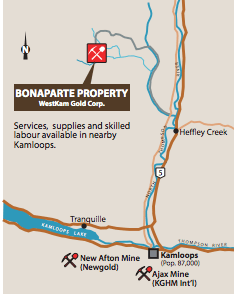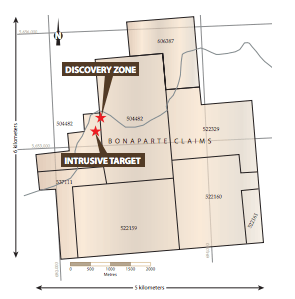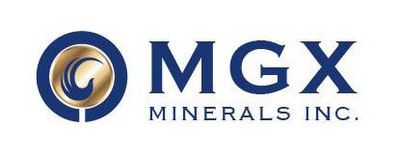NEW YORK, NY / ACCESSWIRE / May 11, 2016 / American Lithium Corp. (TSX VENTURE: LI) (OTC: MNIKF) is developing a lithium brine project in Nevada with world-class potential, approximately 25 km from Albemarle’s Silver Peak (the only commercially producing lithium project in North America). American Lithium Corp. is the subject of a Mining MarketWatch Journal Review. The Company is executing on a large-scale strategy having assembled 100% of the entire heart of Fish Lake Valley structure (over 10,000 acres) that is believed analogous to the neighboring Clayton Valley structure (home to Albemarle, Pure Energy Minerals, and Lithium X), both valleys have similar hydrothermal enrichment models. American Lithium’s Fish Lake Valley Project is advanced-stage and lithium values are encouraging enough for the Company to start to delineate the resource in the sediments of the brines, how big this gets is where things get interesting; the project exhibits hallmarks of major lithium resource presence with the footprint, scope, and scalability that will allow the Company to create a large critical mass presence — something the market is thirsting for as global industrial manufactures look to ensure they have adequate domestic supplies of lithium to satisfy growing demands.
The full Mining Journal review may be viewed at http://miningmarketwatch.net/li.htm online.
The Company is spearheaded by an experienced management team that is no stranger to major success, having individually employed well-timed visionary big-picture strategies at other companies. The team behind LI.V now was part of the same group that that were involved, long before the current lithium rush ever happened, with Pure Energy Minerals in its early-days; Pure Energy was recapitalized and advanced its flagship to resource (PE now hosts an inferred lithium resource of 816,000 LCE). Other past successes include major oil sand projects (e.g. Osum Oil Sands Corp. which attained a multi-billion dollar market cap) — In short, American Lithium shareholders are in solid hands of people that are proven, technically savvy, responsible, prudent and plan with large-scale in mind.
American Lithium Corp. has ~28.43 million shares outstanding (post recent C$2 million financing), ~35.7M fully-diluted. The market cap is miniscule relative to the potential and the current share price presents an opportunity for shareholders to reap large returns as the Company advances to de-risk the Fish Valley Asset this Summer-2016 and prove its resource merit. Li values at the Fish Lake Valley Lithium Project to date are comparable on par with those found at projects in Clayton Valley such as Albemarle (Silver Peak) and Pure Energy Minerals, more importantly the values are at a much shallower depth of almost from surface to 140 feet. By focusing initially on the shallows the Company will aim to advance/re-risk the Project quickly and relatively inexpensively, then as encouraging results come in, potentially turn the shallows into a resource/reserve and move out deeper.
This Spring-2016 American Lithium Corp. announced the acquisition of the different pieces that make up the Fish Lake Valley land package that encompass the entirety of key structures of the South and North bowls, which contain the lithium-rich laden brines, and where gravity data shows distinct gravity lows. Previous owners included project generators that had been holding on to these coveted assets individually, waiting for the right suitor capable of meaningfully advancing the project with a cohesive strategy — American Lithium now has 100% control via 100% earn-in interest, with initial principal consideration already issued and development plan in place to attain 100%.
A robust hydrothermal enrichment situation exists in Fish Lake Valley:
Neighboring Pure Energy has developed a model in Clayton Valley whereby Li concentrations are hydrothermally enriched along different fault lines, and so too, similarly, has American Lithium Corp. from the data collected at Fish Lake Valley. Past explorers of the two bowls in Fish Lake Valley approached from differing focus/perspectives; the south bowl playa and surrounding area was explored for the most part structurally (chasing other minerals), mapping structures in the process. The north bowl playa had been explored mainly peripherally (in the shallows, around the main body of the basin) for Lithium with great success, however past operators were not in a position to develop or explore further inward. American Lithium Corp. has the wherewithal to advance this to fruition and has the advantage of combining the data sets from both past explorers (which relate directly to each other) and correlate it to the understanding of the enrichment model that Pure Energy has proven.
The North bowl playa (7,840 acres):
The valley fill sediments are thought to be 300 to 600 meters (985 to 1970 feet) thick at Fish Lake Valley based on the borehole and gravity data available. Data extracted from the 43-101 Technical Report on the Fish Lake Valley Lithium-Brine Project, November 30, 2015 indicate Lithium in sediments ranging in concentration from 116 ppm to 1040 ppm (average 540.7 ppm), boron from 110 ppm to 4070 ppm (average 1772 ppm), potassium from 0.7% to 2.24% (average 1.53%), and magnesium from 0.35% to 6.37% (average 2.09%). Sodium is abundant on the property with values ranging from 0.47% to >10% (upper detection limit). Brines tested to date also contain anomalous concentrations of the above listed elements, with lithium ranging from 0.81 mg/L to 150 mg/L, boron from <1 mg/L to 2670 mg/L, potassium from 30 to 13300 mg/L, and magnesium from 0.116 mg/L to 41.5 mg/L. In all, approximately 1080 meters (3545 feet) of direct push drilling was completed within 41 holes drilled at 25 sites. Depths probed ranged from 13.11 meters (43.01 feet) to 47.24 meters (154.99 feet). In addition 42 brine samples have been collected from hand held auger holes and surface waters. The property has proven to contain economically interesting lithium/boron/potassium brine mineralization. Important to note is that there is near total absence of magnesium in the brines, which is excellent as high levels of magnesium are problematic (costs go up significantly) when it comes to a production scenario due to its similarity to lithium.
The South bowl playa (2,882 acres, A.K.A. the ‘Atlantis’ claims):
The entity vending the Atlantis claims to American Lithium Corp. made the decision to acquire Atlantis after a review of geological mapping that showed the presence of lithium-bearing rocks in the ranges draining into the Property, and historical ground gravity data that showed a distinct gravity low in the heart of the Atlantis claims. The gravity low was interpreted as a strong indication for the presence of a sub-basin that could host lithium-bearing brines. Dr. John Oldow’s more detailed gravity survey work in Esmeralda County in recent years better defined the historical gravity low as a deep, sub-basin, which led to the staking additional claims at Atlantis in January 2016, to expand the Property. Geophysical exploration at Atlantis in the form of additional gravity and electromagnetic surveys would assist in determining if conductive brines might be present at depth, followed by exploratory drilling of interpreted geophysical targets. As part of a regional lithium exploration program, the United States Geological Survey (“USGS”) reported in Open-File Report 81-962 (1981) that historical drill hole FL-11a is located outside the eastern boundary of the Property, approximately 3 miles (4.5 kilometres) east of the centre of the interpreted sub-basin. Hole FL-11a was drilled to a depth of 450 feet (147 metres) and encountered lithium values in sediments ranging from 10 parts per million (“ppm”) to 115 ppm and averaging 61.7 ppm for 67 samples analyzed. Lithium in sampled ground water ranged from trace at the end of the hole to 21 ppm at a depth of 55 feet (18 metres). American Lithium believes that drilling deeper holes at Atlantis within the area of the interpreted sub-basin could intersect aquifers potentially hosting trapped brines with higher contents of lithium than were encountered in the relatively shallow USGS hole drilled to the east of the gravity low anomaly. Also reported in USGS Open File Report 77-54 (1977) were the collection of 10 surface brine samples with lithium contents ranging 37 – 350 mg/l (ppm), averaging 159 mg/l (ppm), to the north of the sub-basin.
Summer-2016 Development Plans: We anticipate American Lithium Corp. will follow through with a development program in the range of US$1 million – $1.5 million for its Fish Lake Valley Lithium Project; building out ~3 – 4 miles of roads further into the playa (cost ~$15K/mile), and following additional ground gravity surveys, the team will probably set up a sonic drilling program, which is the most cost effective way (relatively inexpensive) to get the samples geologists need from the sediments. The team should be able to keep to under 5 acres of disturbed land, thus avoiding major permitting issues. The team will also conduct brine recovery, and evaporating testing. In short, the team will hone in on structures and sweet spots. A fault system has already been mapped leading directly through the claim blocks.
Brine is by far the easiest and lowest cost type of lithium resource to process (compared to rock and clays), generally easier to explore, has a small environmental footprint, is faster to put into production, and requires less capital.
The full Mining Journal review may be viewed at http://miningmarketwatch.net/li.htm online.
This release may contain forward-looking statements regarding future events that involve risk and uncertainties. Estimates of potential made by the mining analyst and journals are non 43-101 and not from the Company. Readers are cautioned that these forward-looking statements are only predictions and may differ materially from actual events or results. Articles, excerpts, commentary and reviews herein are for information purposes and are not solicitations to buy or sell any of the securities mentioned.
Contact information:
James O’Rourke, Editor
Mining MarketWatch Journal
SOURCE: Mining MarketWatch Journal
Source: Accesswire IA (May 11, 2016 08:09:00 EDT)
News by QuoteMedia
www.quotemedia.comOn May 11, 2016, at 10:35 AM









